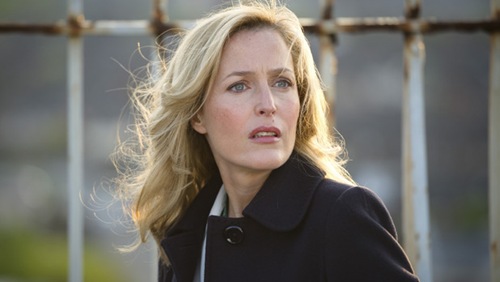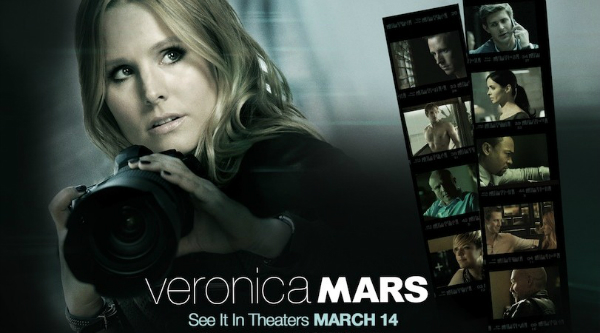This is a guest post by Lauren Byrd.
The Australian TV show, Miss Fisher’s Murder Mysteries (the first two seasons are available on Netflix), is set in the roaring 20s, famous for its jazz, gin, shorter hemlines, bobbed hair, and Art Deco design. The protagonist, Phryne Fisher (pronounced Fry-nee), is an heiress to a small fortune, but she also possesses a sense of adventure and a knack for solving crimes, often outshining her male counterparts at the Melbourne Police Department. Sound like just another Miss Marple or Sherlock Holmes? Think again. Phryne is also a feminist.
Based on the series of novels by Kerry Greenwood, Phryne is an independent woman. Having inherited a small family fortune during World War I, Phryne doesn’t have to work. She could have her pick of a husband and spend the rest of her days reading, knitting, or traveling. Instead, she decides to start solving crimes to earn money. She builds her business from the ground up like any modern day entrepreneur.
However, the television series has made one significant change. In the books, Phryne is 28, which according to Downton Abbey, is past marriageable age. This seems modern enough (and probably quite scandalous for the time), but in casting Essie Davis–who is in her 40s–as Phryne, the series has created one of the few “older,” independent, sexually liberated female characters in television history. Davis herself cited Samantha Jones in Sex and the City as the only other television counterpart to Phryne.
So let’s talk about sex. Phryne has a string of lovers, both in the show and the book series. However, she perhaps possesses a unique set of feelings for her emotionally reserved male counterpart on the Melbourne police force, Detective Inspector Jack Robinson (Nathan Page). The show plays off their chemistry by trotting out the somewhat tired will-they-won’t-they dance, yet these two still make it a compelling tango to watch unfold. Their relationship is an example that speaks even further to Phryne’s independence. Like some female characters might, she doesn’t sit around and wait for Jack to figure things out. She continues to be herself, which means falling into bed with next man she takes a fancy to.
But it is precisely for her sexual liberation that Phryne has been criticized by American viewers. In 2013, the first season became available on Netflix. Shortly afterward, some viewers left comments saying the show would be more enjoyable if Phryne wasn’t such a “tramp” and “obnoxious airhead.”
Jezebel wrote a piece about the comments. Miss Fisher author Greenwood said she had been expecting outrage over her liberated, independent heroine for ages. But she didn’t receive a single complaint when the show aired on Australian television. “Not once. Not even from old ladies. Not even from nuns,” Greenwood said in an interview with The Sydney Morning Herald.
In fact, Greenwood finds Miss Fisher no different than similar male characters who solve crimes for a living. James Bond woos and beds a different woman in every film and is a hero to men and boys. “No one thinks their multiple lovers are indications of slutishness,” Greenwood pointed out.
Davis said in an interview with NPR that she was sent the Jezebel link and thought the reactions to it were fantastic. “The reactions towards the outrage were so powerful and outspoken. And that so many people who, on the Jezebel site, were like, ‘Right, well, if that’s what everyone’s saying about it, I’m watching it.’”
The series, when it comes to sex and violence, is actually quite tame. Even though the show features a different murder every week, the killings and violence are downplayed, and the sexual liberation of Phryne receives the same treatment. There’s the flirting, the first embrace, but then the show cuts to the next scene, leaving everything after implied. Or at the most, the pre-coital scene cuts to the post-coital, a pair of lovers ensconced in bed.
Phryne acts just as independent and liberated outside of the bedroom. She knows how to fly a plane, she delights in driving her own car, a Hispano-Suiza, and totes around a golden revolver with a pearl-encrusted handle. Oh, she also has impeccable taste in clothes. And it’s clear to everyone who knows Phryne who wears the pants in the Fisher household.
Her backstory, which comes out in bits and pieces in the series, is just as fascinating. She grew up poor in Melbourne and only after her English cousins died during World War I did her father inherit their peerage line, making him a count and her the Honorable Miss Fisher. During the Great War, Phryne ran off to France where she joined a French woman’s ambulance unit, where she received an award for bravery. After the war, she worked as an artist’s model in Montparnasse for a few years, before continuing to hop around Europe. In the book series, she’s returned from England back to her roots in Melbourne.
Phryne has an amazing cadre of characters she’s befriended and employed. Despite her statement that she’s “never understood the appeal of parenthood,” she’s certainly not selfish and takes in a young girl, Jane, as her ward in the second episode. Her relationship with her new maid/assistant, Dorothy “Dot” Williams, blossoms into a true friendship throughout the course of the series. At first, Dot is quite reserved, sheltered, and very Catholic, but under Miss Fisher’s influence and tutelage, she becomes much more than confident in herself and turns into a true asset to Phryne’s business.
Phryne met her best friend Mac while she was serving on the French ambulance unit. Mac is a physician and dresses androgynously, but her sexuality is never a point of contention or question in her friendship with Phryne. To round out her household, Phryne employs—funnily enough–a man named Mr. Butler as her butler and Bert and Cec, former dock workers, who drive a taxi and conduct odd jobs for Miss Fisher, both around the house and as part of her investigations. In the books, Bert and Cec are also “red raggers,” a term from that era for socialists.
The show is a delightful romp through the decadence of the late 1920s and while hemlines are higher, Phryne still butts heads with menfolk about her line of work. Frequently referred to as a “lady detective,” Phryne seems to have taken this sexist term and turned it into a calling card for herself, but she still gets talked down to by plenty of men. In fact, her relationship with Detective Inspector Jack Robinson is at first antagonistic. He wants her to butt out of his investigations and mind her own business, he threatens to arrest her for breaking and entering, and only allows her to stay in the room during an autopsy if she won’t say a word. Over time, however, they become partners. He wants her opinions on his investigations, and she wants him there for a second line of defense and in order to use his official title to secure records and information she otherwise wouldn’t be able to obtain.
Australia was one of the first countries that gave women the right to vote, passing the law in 1902. Once soldiers left for the war in Europe, women emerged from the home to fill the jobs left empty by men, which included factory and domestic work, nursing, teaching, and clerical and secretarial positions. Of course, women were paid less than men so even once men returned from the war, many employers wanted to keep women on the payroll because they cost less. Australian politician M. Preston Stanley openly confronted male arrogance and encouraged women toward independence. In 1921, Edith Cowan was the first woman to be elected to the Australian parliament. And of course, the 1920s were the age of the flappers, women who believed in social equity, rather than political. Social equity for the flappers meant women were allowed to drink in bars like men and enjoy all the recreational activities that men did. Not all women embraced this new movement, however. Some women of an older generation, called “wowsers,” objected to these new-fangled practices. (See Phryne’s Aunt Prudence.)
If you have a penchant for 1920s fashions, love detective shows, or just enjoy watching a sassy woman kick some ass, then Miss Fisher’s Murder Mysteries is a shiny gem of a show in a sea of superhero movies, True Detectives, and Game of Thrones.
Lauren Byrd has worked in the entertainment industry in Los Angeles and New York. She currently writes a weekly series on her blog, 52 Weeks of Directors, focusing on a female filmmaker each week.
























